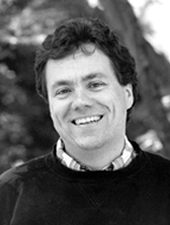Mason, D. X., Keppler, D., Zhang, J., Jackson, T. J., Seger, Y. R., Matsui, S., Abreo, F., Cowell, J. K., Hannon, G. J., Lowe, S. W., Lin, A. W. (February 2006) Defined genetic events associated with the spontaneous in vitro transformation of ElA/Ras-expressing human IMR90 fibroblasts. Carcinogenesis, 27 (2). pp. 350-359. ISSN 0143-3334 (Print)
Abstract
In contrast to rodent cells, normal human fibroblasts are generally resistant to neoplastic transformation in vitro. Here, we report the derivation and characterization of a spontaneously transformed cell line from normal human IMR90 fibroblasts transduced with E1A and Ras oncogenes. Unlike the parental, non-tumorigenic E1A/Ras-expressing IMR90 cells, these spontaneously transformed cells displayed aberrant growth potential in vitro and were capable of tumorigenesis in vivo. In contrast to the parental E1A/Ras-expressing cells, both the spontaneously transformed cells and cells derived from resultant tumors displayed specific t(7q;8q) and t(5q;17) structural chromosomal changes. Chromosome 8q contains c-Myc, which is capable of activating the telomerase catalytic subunit hTERT. Notably, upregulation of c-Myc, hTERT and telomerase activity were detected only in the tumorigenic cells. Transduction of Myc siRNA into the tumorigenic cells led to a concomitant downregulation of hTERT. Furthermore, transduction of Myc or hTERT into the non-tumorigenic E1A/Ras-expressing IMR90 cells was able to confer tumorigenesis on these cells. These studies suggest that the t(7;8) translocation may result in Myc overexpression and its subsequent activation of hTERT, which may contribute to the tumorigenicity of the IMR90 cells. Furthermore, this report describes additional successful neoplastic transformation of human IMR90 fibroblasts by defined genetic elements. The spontaneously transformed cells we have derived provide a valuable model system for the study of neoplastic transformation.
| Item Type: | Paper |
|---|---|
| Uncontrolled Keywords: | Adenovirus E1A Proteins physiology Cell Culture Techniques Cell Transformation Neoplastic DNA-Binding Proteins biosynthesis Fibroblasts Gene Expression Regulation Genes myc Genes ras Genetic Predisposition to Disease Humans Telomerase biosynthesis Transduction, Genetic Translocation Genetic Tumor Cells Cultured |
| Subjects: | diseases & disorders > cancer diseases & disorders > neoplasms |
| CSHL Authors: | |
| Communities: | CSHL labs > Hannon lab CSHL labs > Lowe lab |
| Depositing User: | CSHL Librarian |
| Date: | February 2006 |
| Date Deposited: | 12 Dec 2011 17:49 |
| Last Modified: | 01 Mar 2013 16:40 |
| Related URLs: | |
| URI: | https://repository.cshl.edu/id/eprint/22859 |
Actions (login required)
 |
Administrator's edit/view item |


